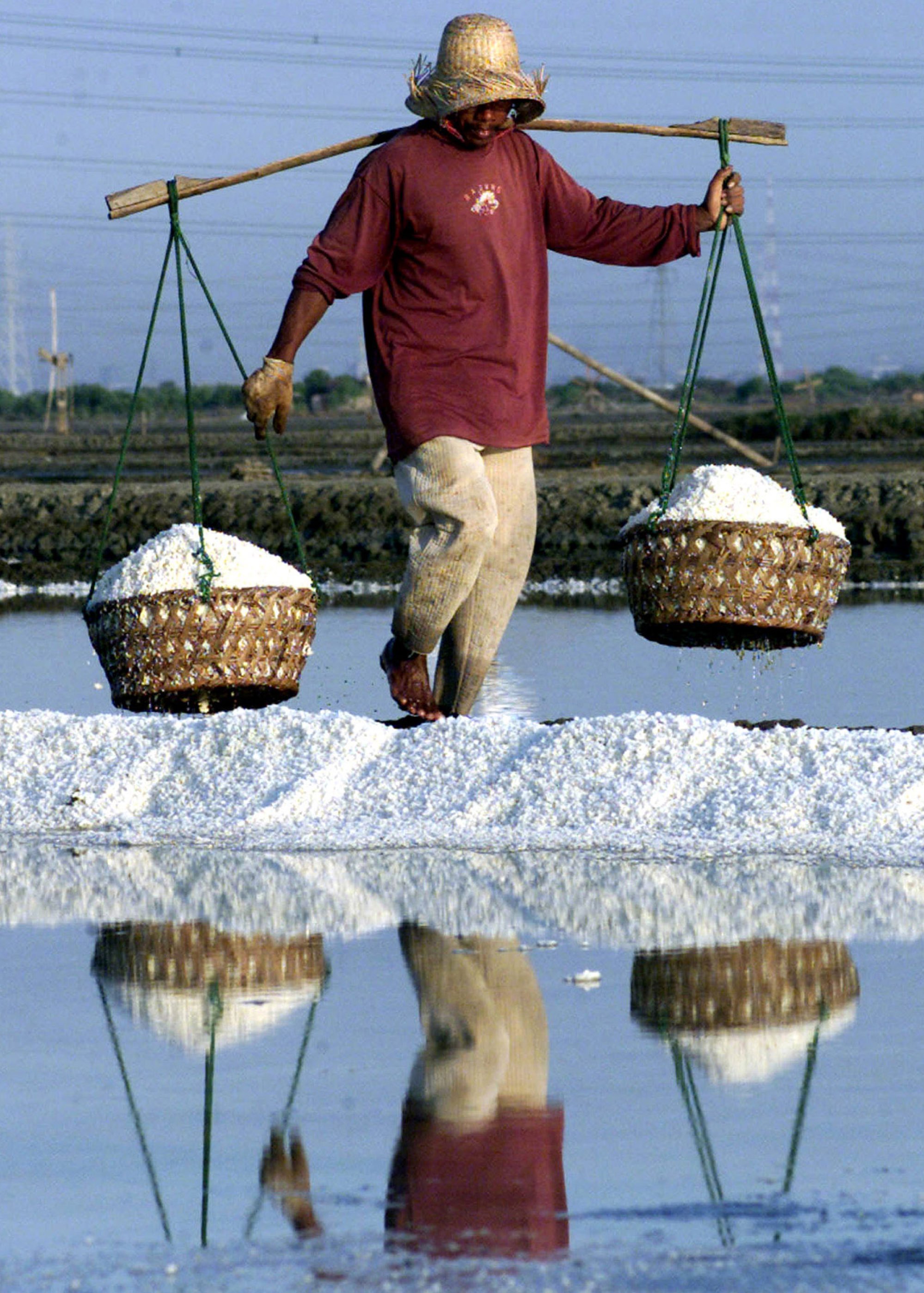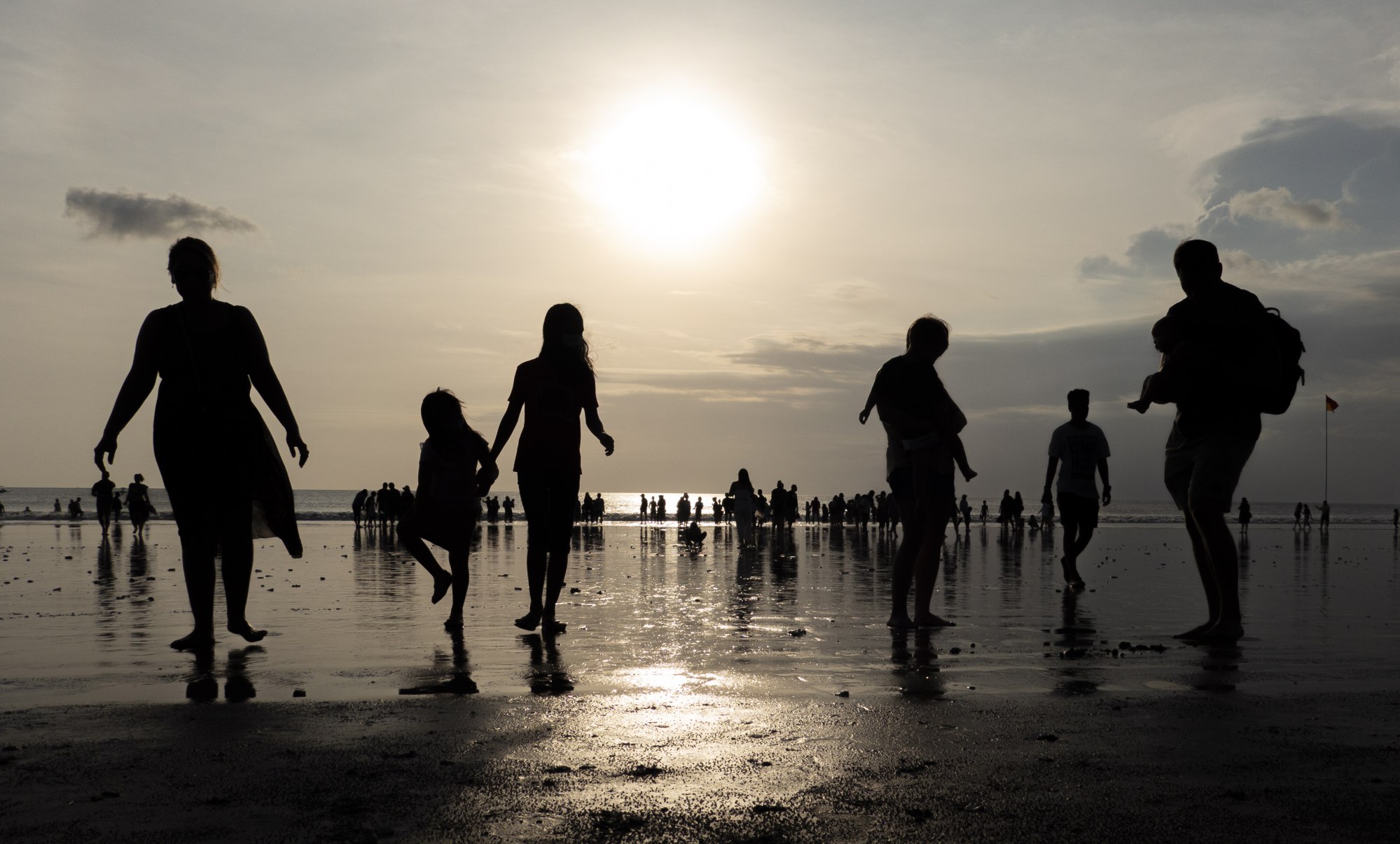Nyoman Warta laboriously carries seawater in two simple containers to the beach of Kusamba, a coastal village located on the island of Bali, in Indonesia.
As is the tradition, he balances them on a pole that rests heavily across his shoulders, and then pours the contents with deliberate care into the dark sand.
As the head of the family, Warta enthusiastically runs the small traditional business and proudly shows interested tourists how salt is produced.
His grandmother was involved in the salt business here, in the Klungkung province. The region lies roughly halfway between the popular holiday resorts of Sanur and Candidasa on the island’s eastern coast.
“There are only about five of these traditional salt farms left in Bali, and almost all of them are here in the east of the island,” says tour guide Putu Surya, who is happy to show holidaymakers this unknown side of Bali.

Salt used to be called “white gold,” that’s how valuable and sought-after the crystalline solid once was.
Today, the condiment is mostly produced industrially – the product is often inferior and consists of 100 per cent sodium chloride.
Not all salt is the same: chemically purified and refined salt is a mass-produced product that is mainly used in industry. Only a tiny fraction of global production is intended for human consumption.
This table salt is usually sold enriched with numerous additives such as anti-caking agents, some of which are controversial.
In Warta’s small-scale operation, the dried, mineral-rich and now salty sand is filled into a large funnel, which is filled with seawater. This slowly seeps through the sand, which acts as a filter.
You can do without gold, but not without salt
This enriches the water with further minerals before it is collected in a large container.
In the 19th century, German chemist Justus Liebig said: “Salt is the most precious of all jewels which the earth gives us.”
Or to put it more simply: “You can do without gold, but not without salt,” as the late antique Roman statesman Cassiodorus put it. Salt is essential for human life.
Sodium and chloride are required to maintain various cell and body functions. For example, the minerals are involved in regulating the water balance and blood pressure.
Sodium is also important for muscle function, while chloride as hydrochloric acid (HCl) is a component of gastric juice, which aids digestion and defends us from pathogens, according to nutritionists.
However, anyone who permanently consumes too much salt risks damaging their health, with doctors warning of the risk of developing high blood pressure. Hypertension is one of the most important risk factors for the occurrence of cardiovascular diseases.

In contrast to refined salt, natural sea salt still contains other minerals and trace elements from the seawater due to the residual moisture.
Despite this, it is not significantly healthier and should also be consumed in moderation, according to research. However, it is free from additives, has a coarser consistency and also tastes a lot better – milder, more harmonious and subtler.
In Bali, the filtered salt water is now filled into halved and hollowed-out tree trunks. Now, the sun is needed. When it shines, the water evaporates within two days – leaving behind snow-white sea salt enriched with minerals, which Warta skilfully scrapes off with a coconut shell.
The remaining moisture is allowed to escape from breathable containers made of palm leaves.
“Every two days, we produce between 10 and 15 kilos, but of course this depends on the weather,” says Warta.
Salt cultivation on Bali is only possible during the dry season between mid-February and the end of October.
The Organic Natural Sea Salt is sold at local markets and directly on-site.
But salt farmers do not get rich from this physically demanding and time-consuming business: a 300-gram pack costs 30,000 Indonesian rupiah – which is just under US$1.91.


